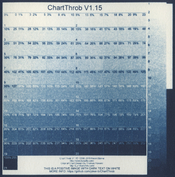I recently started cyanotype, and I have a question I’d like advice on. Please take a look at the attached ChartThrob image (10cm x 10cm).
The graininess is quite noticeable. Is this normal?
The paper I’m using is Arches Watercolor Paper, Hot Pressed, (300gsm), Natural White.
I’m using Jacquard sensitizing solution, double coating it. After applying the solution, I dry it with a low-temperature hair dryer for about 15 minutes each time. The room humidity is around 40–50%.
I’ve looked into various solutions to address this issue, but I haven’t been able to find anything that works.
Is there any way to reduce this graininess?
Thank you!
The graininess is quite noticeable. Is this normal?
The paper I’m using is Arches Watercolor Paper, Hot Pressed, (300gsm), Natural White.
I’m using Jacquard sensitizing solution, double coating it. After applying the solution, I dry it with a low-temperature hair dryer for about 15 minutes each time. The room humidity is around 40–50%.
I’ve looked into various solutions to address this issue, but I haven’t been able to find anything that works.
Is there any way to reduce this graininess?
Thank you!




